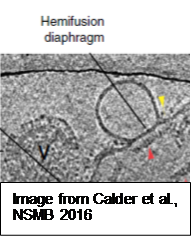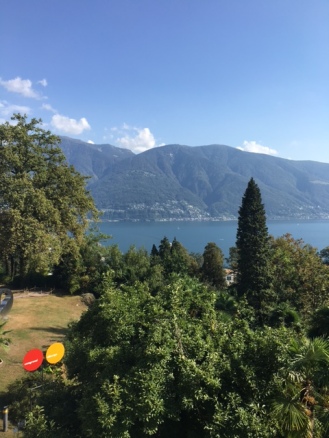I have been talking to many people at the Liposomes, Exosomes, and Virosomes meeting in Ascona, Switzerland. One question I asked was about the topic of membrane tethering and fusion that was discussed during the lectures from Reinhard Jahn, Wolfhard Almers, Chris Stroupe, and Nikhil Gandasi. Beautiful images of bilayer interactions were shown that followed a step where the membranes engage in hemifusion. After that step, the stalk is created, followed by membrane fusion, where the bilayer is connected for the two cells/liposomes/etc.
I encouraged people to talk about what is known and what is not known, what is dreamed and speculated about this. These are my observations from those conversations:
Our theoretical colleagues have made some progress in this regard. These events have been simulated and described by Marrink and published in a beautiful publication over 13 years ago.
Their work suggests that the a single phospholipid undergoes a very unfavorable, rare event of flipping one acyl chain to the other bilayer, creating a high energy state that then may promote the flipping of one acyl chain of another lipid. Once two lipids flipped, the following steps in the process may happen in a more energetically favored way. Of course, right now there is no way to experimentally test this (at least as far as I heard here). However, from my conversations with people willing to share their knowledge, I heard that there are indeed some lipids in cell membranes that may be more prone to this rare behavior. These lipids may be rare, like the ladderenes shown by Steve Boxer, or they are around our membranes but we haven’t really identified them.
A lot of the studies described during this conference lead us to conclude that many of our observations and the biology behind our studies depends on the context.


